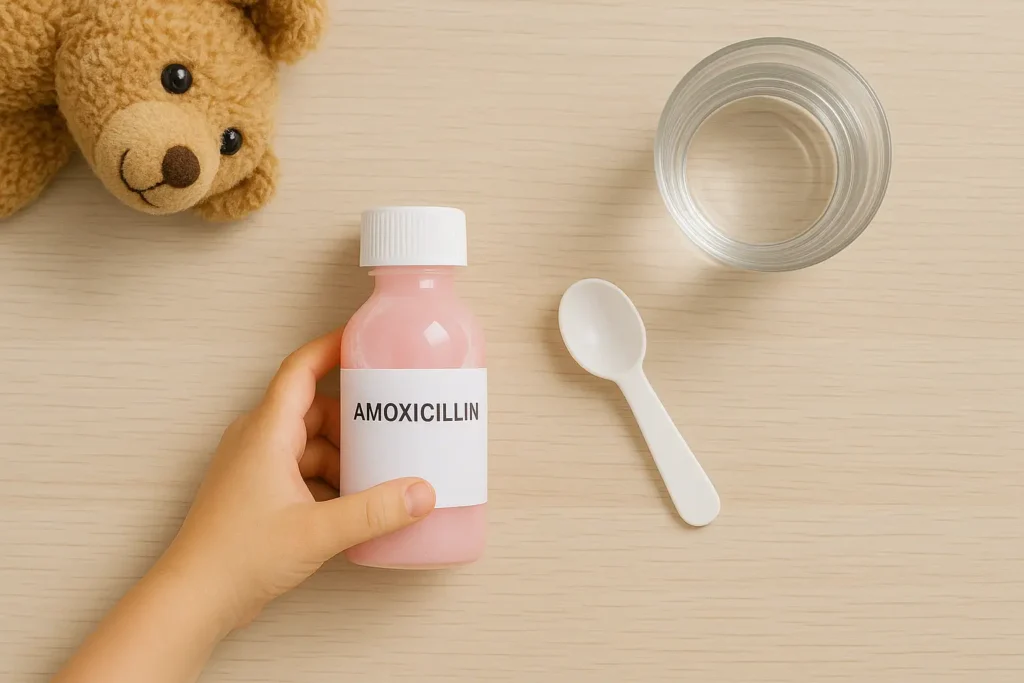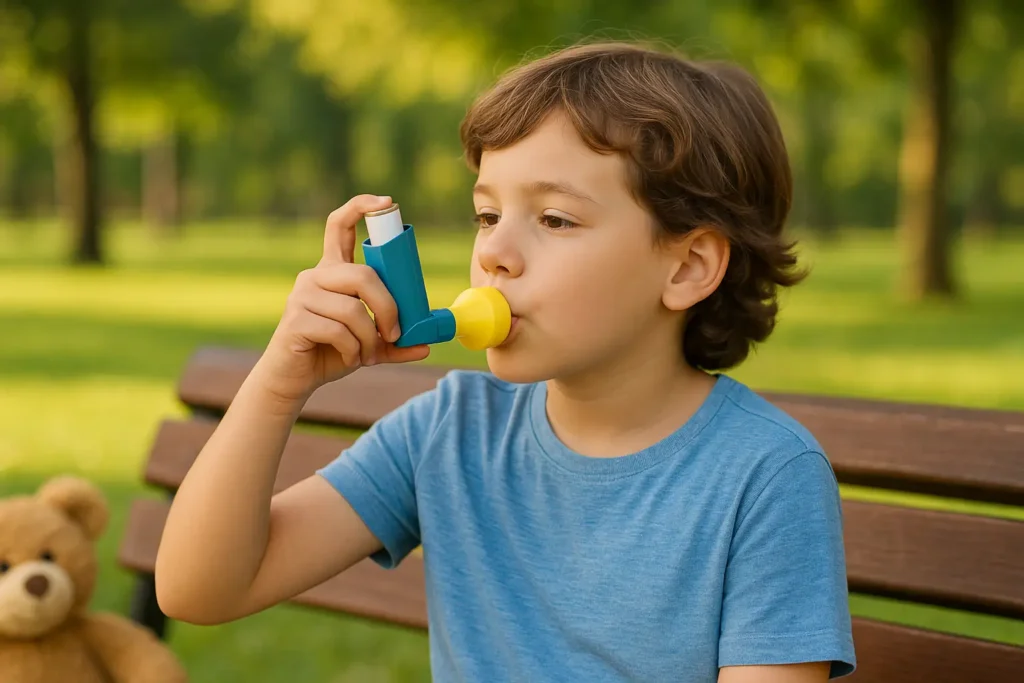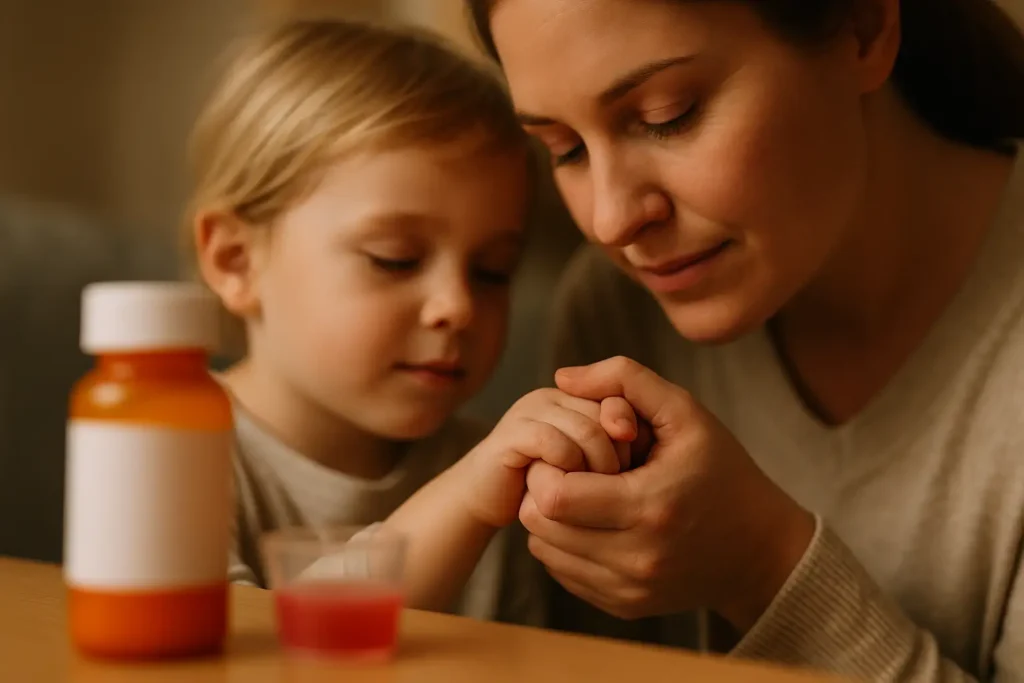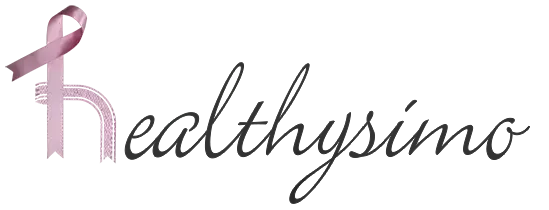H2 Introduction: Demystifying Your Child’s Prescription
As a parent, few things are more worrying than when your child is sick and the pediatrician hands you a prescription. You trust their judgment, but you can’t help but wonder: What is this medication? How does it work? Is it safe?
You are not alone in this feeling. Understanding the most common medications prescribed to children can empower you to have more informed conversations with your child’s doctor and provide care with greater confidence. This guide will walk you through the 30 most essential kids’ medications, explaining their uses, common brand names, and key safety considerations—all in clear, parent-friendly language.
The 30 Most Essential Kids’ Medications
1. Amoxicillin: The Go-To Antibiotic
- Generic Name: Amoxicillin
- Common Brand Names: Amoxil
- Drug Class: Penicillin Antibiotic
- Primary Uses: A first-line treatment for common bacterial infections like strep throat, ear infections (otitis media), sinus infections, and childhood pneumonia.
- Formulations: Liquid (for young children), chewable tablet, capsule.
- Key Note: It is typically inexpensive, well-tolerated, and one of the most frequently used antibiotics in pediatrics.
- Expanded Information: Amoxicillin is prized for its effectiveness and safety profile in children. It’s important to complete the entire prescribed course, even if your child seems fully recovered, to prevent the infection from returning and to avoid antibiotic resistance. The liquid form is often flavored to make it more palatable.
- What to Discuss with Your Pediatrician: Confirm it’s for a bacterial (not viral) infection. Ask about the potential for a diaper rash or diarrhea and whether a probiotic might be helpful. Always report any signs of an allergic reaction, like a spreading rash or hives.
2. Azithromycin: The Convenient “Z-PAK”
- Generic Name: Azithromycin
- Common Brand Names: Zithromax
- Drug Class: Macrolide Antibiotic
- Primary Uses: Treats ear infections, walking pneumonia, and certain bacterial sinus infections. It’s known for its convenient, often shorter, dosing schedule (e.g., 5 days instead of 10).
- Formulations: Liquid, tablet.
- Key Note: It is available as a generic and is a common alternative for children with penicillin allergies (if the allergy is not severe).
- Expanded Information: The shorter course can improve compliance, but it’s crucial to give every dose as directed. A common side effect is stomach upset or diarrhea. It has a long half-life, meaning it stays in the body for several days after the last dose, which is why the course is shorter.
- What to Discuss with Your Pediatrician: Whether the shorter course is appropriate for your child’s specific infection and how to manage potential gastrointestinal side effects.
3. Albuterol: The Quick-Relief Breathing Rescue
- Generic Name: Albuterol
- Common Brand Names: ProAir, Ventolin, Proventil
- Drug Class: Bronchodilator (Short-Acting Beta Agonist)
- Primary Uses: Provides rapid relief during an asthma attack or for sudden breathing issues like wheezing caused by bronchitis or allergies. It works by quickly relaxing the muscles around the airways.
- Formulations: Inhaler (MDI), nebulizer solution.
- Key Note: Nebulizer solution is often inexpensive, while brand-name inhalers can be costlier. Always use an inhaler with a spacer to ensure the medicine reaches the lungs.
- Expanded Information: This is a “rescue” medication, not a daily controller. If your child needs it more than twice a week for symptom relief (not including pre-exercise use), their asthma may not be well controlled, and you should consult your doctor. Shaky hands or a temporary faster heart rate are common side effects.
- What to Discuss with Your Pediatrician: Ensure you have a clear “Asthma Action Plan” that specifies when and how often to use this medication and when to seek emergency care.
4. Amoxicillin/Clavulanate: The Powerhouse Combo
- Generic Name: Amoxicillin and Clavulanate
- Common Brand Names: Augmentin
- Drug Class: Antibiotic
- Primary Uses: Used for more stubborn bacterial infections that amoxicillin alone can’t tackle, including resistant ear infections, sinus infections, and pneumonia.
- Formulations: Liquid, tablet.
- Key Note: This is a step up from amoxicillin and may cause more stomach upset.
- Expanded Information: The clavulanate component helps the amoxicillin overcome defenses used by resistant bacteria. Due to the higher likelihood of diarrhea and stomach cramps, it is often recommended to give this medication with food.
- What to Discuss with Your Pediatrician: The reason for choosing this stronger antibiotic and strategies to manage potential gastrointestinal side effects, such as using probiotics or yogurt with active cultures.

5. Cefdinir: The Trusted Alternative
- Generic Name: Cefdinir
- Common Brand Names: Omnicef
- Drug Class: Cephalosporin Antibiotic
- Primary Uses: Treats sinus infections, ear infections, and pneumonia. It’s often used when first-line antibiotics aren’t suitable or effective.
- Formulations: Liquid, capsule.
- Key Note: It is not usually a first-line treatment but is effective for certain resistant infections. It can be more expensive than amoxicillin.
- Expanded Information: A rare but harmless side effect can cause stools to turn a reddish-orange color; it can also temporarily stain teeth. This is not blood and is not a cause for alarm. It’s important to note for children with severe penicillin allergies, as there is a small chance of cross-reactivity.
- What to Discuss with Your Pediatrician: If your child has a severe penicillin allergy, confirm that this is a safe alternative.
6. Cephalexin: The Broad-Spectrum Skin Saver
- Generic Name: Cephalexin
- Common Brand Names: Keflex
- Drug Class: Cephalosporin Antibiotic
- Primary Uses: Treats a wide range of bacterial infections, but is particularly common for skin and soft tissue infections like cellulitis and impetigo.
- Formulations: Liquid, tablet, capsule.
- Key Note: It is widely available as an inexpensive generic.
- Expanded Information: Cephalexin is very effective against the staph and strep bacteria that commonly cause skin infections. As with all antibiotics, it’s important to finish the entire course to ensure the infection is completely cleared.
- What to Discuss with Your Pediatrician: The expected timeline for improvement of the skin infection and how to properly care for the affected area topically.
7. Fluticasone: The Inflammation Fighter
- Generic Name: Fluticasone
- Common Brand Names: Flonase (nasal spray), Flovent (inhaler)
- Drug Class: Corticosteroid
- Primary Uses: Used for the ongoing management and prevention of allergy symptoms (nasal spray) and asthma (inhaler). It works by reducing inflammation.
- Formulations: Nasal spray, inhaler, topical cream.
- Key Note: This is a preventive, maintenance medication and is not for immediate relief of symptoms.
- Expanded Information: It can take several days to a week of consistent use to build up its full effect. For nasal sprays, proper technique (leaning forward, aiming away from the septum) is key to avoid nosebleeds. Authorized generics are widely available.
- What to Discuss with Your Pediatrician: The importance of daily use for prevention, even when your child feels well, and to demonstrate administration technique.
8. Prednisolone Sodium Phosphate: The Liquid Inflammation Rescuer
- Generic Name: Prednisolone
- Common Brand Names: Pediapred, Orapred
- Drug Class: Corticosteroid
- Primary Uses: A liquid steroid used to quickly treat significant inflammation from acute conditions like asthma attacks, croup, and severe allergic reactions like poison ivy.
- Formulations: Liquid.
- Key Note: It is typically used for short courses to quickly reduce inflammation.
- Expanded Information: This is a powerful systemic steroid. It can cause temporary side effects like increased appetite, mood swings (irritability or “roid rage”), and high blood sugar. It should never be stopped abruptly; the doctor will provide a tapering schedule if needed.
- What to Discuss with Your Pediatrician: The specific tapering instructions and what behavioral side effects to expect so you are prepared.
9. Ibuprofen: The Fever and Pain Manager
- Generic Name: Ibuprofen
- Common Brand Names: Motrin, Advil
- Drug Class: Nonsteroidal Anti-inflammatory Drug (NSAID)
- Primary Uses: Reduces fever, pain (from headaches, sore throats, injuries), and inflammation.
- Formulations: Liquid, chewable tablet.
- Key Note: Always dose based on your child’s weight, not just their age.
- Expanded Information: Ibuprofen is particularly effective for inflammatory pain, such as from a sprain or toothache. It should be given with food to prevent stomach upset. Be cautious not to double-up with other medications containing ibuprofen.
- What to Discuss with Your Pediatrician: The correct weight-based dosage and the appropriate interval between doses (usually every 6-8 hours).
10. Montelukast Sodium: The Once-a-Day Preventer
- Generic Name: Montelukast
- Common Brand Names: Singulair
- Drug Class: Leukotriene Receptor Antagonist
- Primary Uses: Used for prevention and long-term treatment of asthma and allergies (both seasonal and year-round).
- Formulations: Chewable tablet, granule packet.
- Key Note: Available as a generic. It is a once-daily, preventive medication, not for acute attacks.
- Expanded Information: The FDA has a Boxed Warning regarding potential neuropsychiatric events, such as mood changes, agitation, depression, or suicidal thoughts. Parents should closely monitor their child’s behavior and report any changes immediately.
- What to Discuss with Your Pediatrician: The best time of day to administer it (often at bedtime) and to create a plan for monitoring your child’s mood and behavior.

11. Trimethoprim/Sulfamethoxazole: The UTI and MRSA Specialist
- Generic Name: Trimethoprim/Sulfamethoxazole
- Common Brand Names: Bactrim, Septra
- Drug Class: Antibiotic
- Primary Uses: Commonly used for urinary tract infections (UTIs) and certain skin infections, including MRSA.
- Formulations: Liquid, tablet.
- Key Note: It is not a first-choice antibiotic for common ear or respiratory infections.
- Expanded Information: This drug can increase sensitivity to sunlight, so sun protection is important during treatment. It’s also important to ensure your child drinks plenty of fluids while taking it.
- What to Discuss with Your Pediatrician: Confirm the type of infection (e.g., a confirmed MRSA skin infection) and discuss any history of sulfa allergies.
12. Acetaminophen with Codeine: The Restricted Pain Reliever
- Generic Name: Acetaminophen and Codeine
- Common Brand Names: Tylenol #3
- Drug Class: Narcotic (Opioid) Pain Reliever
- Primary Uses: Reserved for severe pain that doesn’t respond to other pain medications.
- Formulations: Liquid, tablet.
- Key Note: The FDA warns that codeine should not be used in children due to risks of serious breathing problems.
- Expanded Information: Codeine is metabolized unpredictably in children. Some may convert it to morphine too rapidly, leading to dangerously high levels that can cause fatal respiratory depression. Its use in pediatrics is now extremely rare and strongly discouraged.
- What to Discuss with Your Pediatrician: Ask about safer, more effective alternatives for pain control, such as ibuprofen or other non-opioid options.
13. Hydrocodone/Acetaminophen: The Stronger Restricted Pain Reliever
- Generic Name: Hydrocodone and Acetaminophen
- Common Brand Names: Vicodin
- Drug Class: Narcotic (Opioid) Pain Reliever
- Primary Uses: For management of severe acute pain, typically in a hospital setting.
- Formulations: Tablet.
- Key Note: Stronger than codeine and carries similar risks.
- Expanded Information: Like codeine, the use of hydrocodone in children is highly limited due to the risks of respiratory depression, sedation, and addiction. It is only considered when the benefits overwhelmingly outweigh the significant risks and under very close supervision.
- What to Discuss with Your Pediatrician: Insist on a clear explanation of why this is necessary and what the monitoring plan is, including signs of overdose to watch for.
14. Mupirocin: The Impetigo Fighter
- Generic Name: Mupirocin
- Common Brand Names: Bactroban
- Drug Class: Topical Antibiotic
- Primary Uses: Treats bacterial skin infections like impetigo.
- Formulations: Ointment, cream.
- Key Note: The generic ointment is a very common and effective treatment for localized skin infections.
- Expanded Information: It is also used to decolonize the nose of MRSA bacteria in some cases. A small amount is applied directly to the affected area 2-3 times daily. Covering the area with a bandage can help prevent the infection from spreading.
- What to Discuss with Your Pediatrician: How to properly clean and apply the ointment to the infected skin and for how long to continue treatment.
15. Nystatin: The Yeast Infection Solution
- Generic Name: Nystatin
- Common Brand Names: Nilstat
- Drug Class: Antifungal
- Primary Uses: Used to treat yeast infections, most commonly oral thrush and candidal diaper rash.
- Formulations: Oral suspension, topical cream, ointment.
- Key Note: It is not absorbed by the body, making it very safe for localized yeast issues.
- Expanded Information: For oral thrush, the liquid is “painted” inside the cheeks and on the tongue with a syringe or swab. For diaper rash, it’s applied like any other cream. It often takes a full course of treatment, even after the rash appears gone, to prevent recurrence.
- What to Discuss with Your Pediatrician: Confirming that the rash is indeed a yeast infection and not a different type of irritation.
16. Methylphenidate: The Classic ADHD Stimulant
- Generic Name: Methylphenidate
- Common Brand Names: Ritalin (short-acting), Concerta (long-acting), Daytrana (patch)
- Drug Class: Stimulant
- Primary Uses: First-line treatment for Attention-Deficit/Hyperactivity Disorder (ADHD).
- Formulations: Tablet, capsule, patch.
- Key Note: There are many formulations that work for different durations (short, intermediate, long-acting).
- Expanded Information: Stimulants are the most effective medication for ADHD. They work by improving focus and impulse control. Common side effects can include decreased appetite and sleep disturbances, which often can be managed by adjusting the timing or formulation.
- What to Discuss with Your Pediatrician: The pros and cons of different formulations, a plan to monitor appetite and growth, and how to coordinate with your child’s school.
17. Cough and Cold Combinations: Medications to Use with Caution
- Generic Name: Dextromethorphan/Phenylephrine/Chlorpheniramine
- Common Brand Names: Various store brands
- Drug Class: Cough Suppressant/Decongestant/Antihistamine
- Primary Uses: Meant to relieve multiple cold symptoms.
- Formulations: Liquid.
- Key Note: Experts strongly warn against using these in children under 6.
- Expanded Information: These medications have not been proven to be effective in young children and can have serious side effects. The American Academy of Pediatrics advises against their use. In 2023, an FDA panel confirmed that oral phenylephrine, a common decongestant, is ineffective. Safer alternatives include saline spray, humidifiers, and honey (for children over 1).
- What to Discuss with Your Pediatrician: Ask for safe, age-appropriate strategies to manage your child’s cold symptoms.
18. Mometasone: The Multi-Purpose Inflammation Controller
- Generic Name: Mometasone
- Common Brand Names: Nasonex (nasal spray), Asmanex (inhaler)
- Drug Class: Corticosteroid
- Primary Uses: Treats seasonal and year-round allergies (nasal spray) and asthma (inhaler).
- Formulations: Nasal spray, inhaler, topical cream.
- Key Note: Like fluticasone, this is a maintenance medication for controlling inflammation.
- Expanded Information: It is a potent steroid that provides 24-hour relief with once-daily dosing for allergies. Consistent use is key for maximum benefit. It is not intended for immediate relief of an asthma attack or sudden allergy symptoms.
- What to Discuss with Your Pediatrician: The correct technique for using the inhaler or nasal spray to ensure the medicine is delivered effectively.
19. Triamcinolone: The Allergy and Eczema Soother
- Generic Name: Triamcinolone
- Common Brand Names: Nasacort (nasal spray), Kenalog (topical)
- Drug Class: Corticosteroid
- Primary Uses: Treats allergy symptoms (nasal spray) and skin rashes like eczema (cream/ointment).
- Formulations: Nasal spray, cream, ointment.
- Key Note: Nasacort is now available over-the-counter as a generic.
- Expanded Information: The topical forms come in different strengths. The ointment is more potent and occlusive than the cream, making it better for thick, scaly patches of eczema. For nasal allergies, it works best when used daily during allergy season.
- What to Discuss with Your Pediatrician: Which strength of topical cream/ointment is appropriate for your child’s skin condition and on which parts of the body it can be safely used.
20. Prednisone: The Systemic Inflammation Fighter
- Generic Name: Prednisone
- Common Brand Names: Deltasone
- Drug Class: Corticosteroid
- Primary Uses: Used for short-term treatment of inflammatory conditions like asthma flare-ups, poison ivy, and croup.
- Formulations: Liquid, tablet.
- Key Note: It is closely related to prednisolone and is typically used in short bursts.
- Expanded Information: Prednisone is inactive and must be converted by the liver into prednisolone to work. It shares the same potential side effects as prednisolone, including increased appetite, mood changes, and high blood sugar. Short-term use is generally very safe and highly effective.
- What to Discuss with Your Pediatrician: Whether a tapering dose is needed and how to manage the temporary side effects.
21. Sodium Fluoride: The Dental Cavity Defender
- Generic Name: Sodium Fluoride
- Common Brand Names: Prescription fluoride drops or tablets
- Drug Class: Vitamin/Supplement
- Primary Uses: Prevents dental cavities in children whose water supply is not fluoridated.
- Formulations: Liquid, tablet.
- Key Note: Only use if recommended by your pediatrician or dentist based on your water source.
- Expanded Information: Fluoride strengthens tooth enamel and can reverse early signs of decay. The dosage is critical, as too much fluoride can cause dental fluorosis (white spots on the teeth). Your doctor will determine the correct dose based on your child’s age and the natural fluoride level in your drinking water.
- What to Discuss with Your Pediatrician: Whether your local water is fluoridated and if your child needs a supplement.
22. Multivitamins with Fluoride: The All-in-One Supplement
- Generic Name: Multivitamin with Fluoride
- Common Brand Names: Poly-Vi-Flor, Tri-Vi-Flor
- Drug Class: Vitamin/Supplement
- Primary Uses: Provides essential vitamins and cavity-preventing fluoride in one supplement.
- Formulations: Chewable tablet, liquid.
- Key Note: A convenient option for children who need both vitamins and fluoride supplementation.
- Expanded Information: This is a prescription-only product that ensures children get the right balance of fluoride along with key vitamins like A, D, and C, and sometimes iron. It simplifies the routine for parents who would otherwise need to give multiple supplements.
- What to Discuss with Your Pediatrician: Whether your child’s diet and water source warrant a combined supplement or if separate vitamins and fluoride would be better.
H3 23. Amphetamine/Dextroamphetamine: The Alternative ADHD Stimulant
- Generic Name: Amphetamine Salts
- Common Brand Names: Adderall, Adderall XR
- Drug Class: Stimulant
- Primary Uses: Treats ADHD.
- Formulations: Tablet, extended-release capsule.
- Key Note: Available as generics. It is another first-line option for ADHD.
- Expanded Information: This class of stimulant works slightly differently than methylphenidate. If one type of stimulant causes side effects or isn’t effective, the other may work well. It shares similar side effect profiles, including potential appetite suppression and sleep issues.
- What to Discuss with Your Pediatrician: The differences between this and methylphenidate, and which might be a better starting point for your child.
24. Hydrocortisone: The Mild Rash Reliever
- Generic Name: Hydrocortisone
- Common Brand Names: Cortizone-10
- Drug Class: Topical Corticosteroid
- Primary Uses: Treats mild skin rashes, insect bites, and eczema.
- Formulations: Cream, ointment, lotion.
- Key Note: This is a low-strength steroid available over-the-counter and is very safe for minor skin irritations.
- Expanded Information: It is the mildest topical steroid. It should be applied in a thin layer to the affected area 1-3 times daily. It is not typically strong enough for severe or chronic eczema, for which a prescription-strength steroid may be needed.
- What to Discuss with Your Pediatrician: When an OTC strength is sufficient and when a stronger prescription cream is necessary.
25. Budesonide: The Flexible Steroid
- Generic Name: Budesonide
- Common Brand Names: Pulmicort (for asthma), Rhinocort (for allergies)
- Drug Class: Corticosteroid
- Primary Uses: Used for asthma (nebulizer solution or inhaler) and allergies (nasal spray).
- Formulations: Nebulizer solution, inhaler, nasal spray.
- Key Note: Rhinocort nasal spray is now available over-the-counter.
- Expanded Information: Pulmicort Respules are a common first-line daily controller medication for young children with asthma, administered via a nebulizer. It is a maintenance therapy that reduces airway inflammation over time.
- What to Discuss with Your Pediatrician: The correct use of the nebulizer or inhaler and how to differentiate this maintenance medication from a rescue inhaler like albuterol.
26. Ciprofloxacin/Dexamethasone: The Potent Ear Drop
- Generic Name: Ciprofloxacin and Dexamethasone
- Common Brand Names: Ciprodex
- Drug Class: Antibiotic/Steroid Combination
- Primary Uses: Treats swimmer’s ear and middle ear infections in children with ear tubes.
- Formulations: Ear drops.
- Key Note: This is a specialized ear drop that combines an antibiotic with a steroid to reduce inflammation.
- Expanded Information: The steroid (dexamethasone) quickly reduces the painful swelling, while the antibiotic (ciprofloxacin) clears the bacterial infection. It is specifically formulated for use when the eardrum is not intact (e.g., with tubes or a perforation).
- What to Discuss with Your Pediatrician: The proper technique for administering the ear drops to ensure they reach the infected area.
27. Promethazine: The Nausea Medication with a Warning
- Generic Name: Promethazine
- Common Brand Names: Phenergan
- Drug Class: Antihistamine (used for nausea)
- Primary Uses: Used to treat severe nausea and vomiting.
- Formulations: Syrup, tablet, suppository.
- Key Note: Carries a black box warning for children under 2 due to risk of severe breathing problems.
- Expanded Information: Due to its risks of causing respiratory depression and sedation, its use in children is now limited. Many pediatricians now strongly prefer ondansetron (Zofran), which is safer and often more effective for nausea caused by viruses or chemotherapy.
- What to Discuss with Your Pediatrician: Ask if ondansetron is a suitable and safer alternative for your child’s condition.
28. Prednisolone Acetate: The Eye Inflammation Specialist
- Generic Name: Prednisolone Acetate
- Common Brand Names: Pred Forte
- Drug Class: Corticosteroid
- Primary Uses: Treats eye inflammation and infections (when combined with an antibiotic).
- Formulations: Eye drops.
- Key Note: This is a different formulation of prednisolone specifically designed for ophthalmic use.
- Expanded Information: It is a potent steroid drop used for conditions like uveitis or after eye surgery. It is crucial to follow the dosing schedule exactly, as frequent use is often required initially. Do not stop these drops abruptly without medical guidance.
- What to Discuss with Your Pediatrician/Ophthalmologist: The exact dosing schedule and how to properly administer eye drops to a child.
29. Antipyrine/Benzocaine: The Ear Pain Drops (Rarely Used)
- Generic Name: Antipyrine and Benzocaine
- Common Brand Names: A/B Otic Drops
- Drug Class: Analgesic Ear Drops
- Primary Uses: Relieves pain from ear infections.
- Formulations: Ear drops.
- Key Note: Most of these drops were not FDA-approved, and the FDA has taken action against manufacturers.
- Expanded Information: These drops were historically used to numb ear pain but did not treat the underlying infection. Due to lack of proof of safety and efficacy, they are now rarely prescribed. Oral pain relievers like acetaminophen and ibuprofen are the preferred method for managing ear pain.
- What to Discuss with Your Pediatrician: Safer and more effective alternatives for managing your child’s ear pain.
30. Lisdexamfetamine: The Smooth-Acting ADHD Medication
- Generic Name: Lisdexamfetamine
- Common Brand Names: Vyvanse
- Drug Class: Stimulant
- Primary Uses: Treats ADHD and Binge Eating Disorder.
- Formulations: Capsule, chewable tablet.
- Key Note: It is a prodrug, meaning it is activated slowly in the body, which can lead to a smoother effect and lower potential for abuse.
- Expanded Information: Lisdexamfetamine is inactive until it is metabolized by the body’s red blood cells. This provides a gradual onset and longer, smoother duration of action compared to some other stimulants, often with less “ups and downs” or rebound irritability. It is now available in generic form.
- What to Discuss with Your Pediatrician: Whether the smooth, long-lasting profile of this medication would be beneficial for your child, especially if they experience rebound effects with other medications.

Conclusion: Your Role as an Informed Parent
Knowing about these common medications is a powerful first step. However, this guide is for informational purposes only and is not a substitute for professional medical advice. Always follow your pediatrician’s specific instructions regarding dosage and duration.
Be proactive: tell your doctor about any allergies or sensitivities your child has, and don’t hesitate to ask questions. What is the medication for? What are the potential side effects? Is there a generic alternative? By partnering with your pediatrician and being an informed advocate, you can ensure your child receives the safest and most effective care possible.
Ressources
- U.S. Food and Drug Administration (FDA) – For Parents
- Link: www.fda.gov/forparents
- Description: An excellent portal for information on medication safety, dosing, approvals, and public health alerts for children.
- FDA Drug Safety Communications
- Link: www.fda.gov/drugs/drug-safety-and-availability/drug-safety-communications
- Description: The direct source for the latest FDA warnings and safety announcements about specific medications, including those related to codeine and phenylephrine.
- MedlinePlus (U.S. National Library of Medicine)
- Link: medlineplus.gov
- Description: A patient-friendly database with detailed drug information, side effects, and dosage guides for both generic and brand-name drugs.
- Centers for Disease Control and Prevention (CDC) – Antibiotic Use
- Link: www.cdc.gov/antibiotic-use
- Description: Essential resources on the appropriate use of antibiotics, the dangers of resistance, and why completing a prescription is crucial.
Medical & Professional Organizations
- American Academy of Pediatrics (AAP) – HealthyChildren.org
- Link: www.healthychildren.org
- Description: The official parenting website from the AAP, offering a wealth of evidence-based articles on child health, medication, and disease management written and reviewed by pediatricians.
- AAP – ADHD Clinical Practice Guideline
- Link: Publications.aap.org/pediatrics/article/144/4/e20192528/81590/ADHD-in-Children-and-Adolescents
- Description: The official guideline for the diagnosis, evaluation, and treatment of ADHD, including the role of medication.
- American Academy of Allergy, Asthma & Immunology (AAAAI)
- Link: www.aaaai.org
- Description: A leading resource for understanding and managing asthma and allergies in children, including treatment options and how-to videos for inhaler techniques.
Pharmacy & Cost Resources
- GoodRx
- Link: www.goodrx.com
- Description: A practical tool for comparing medication prices at different pharmacies and finding available coupons or discount cards for brand-name and generic drugs.
A Final Note: The information in this article is for educational purposes and reflects common prescribing practices. The specific medication, dosage, and treatment plan for your child must always be determined by a qualified healthcare professional based on their individual needs and medical history.

